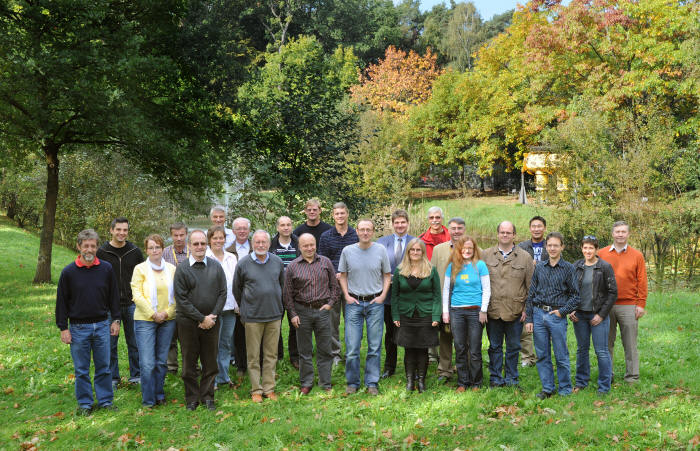News Archive
back to News
TASCA workshops in the past see here
Darmstadt, September 13, 2012
TASCA Collaboration Meeting at GSI
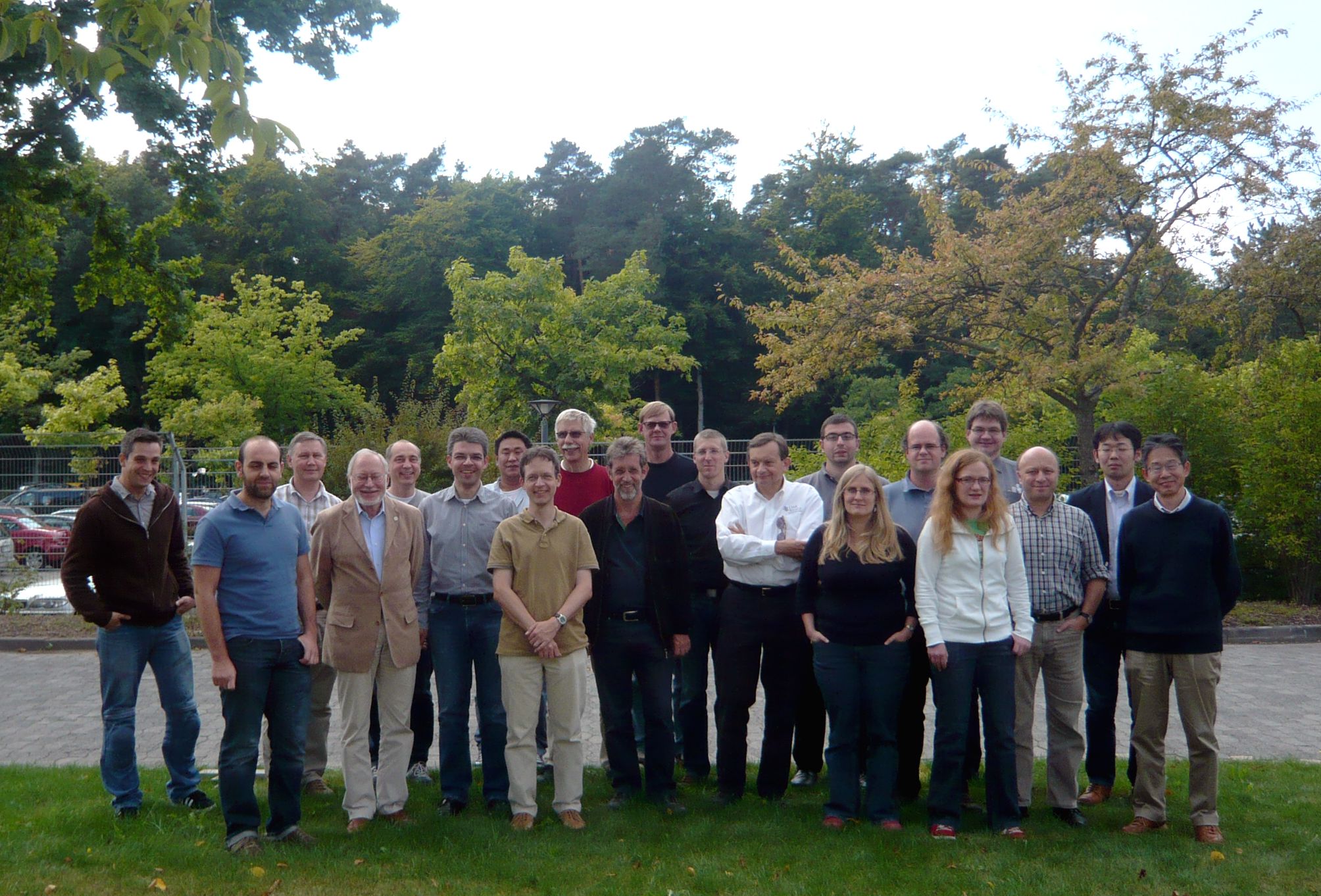
May 12, 2012
Turning a line - The race to extend the periodic table continues
Article in "The Economist"
September 17, 2011
New Effort to Create Element 120
Video from Prof. Martyn Poliakoff / Univ. of Nottingham
YouTube
The Periodic Table of Videos
September 9, 2011
Which Way to the Island ?
Science, 333 (6048), 1377-1379
Darmstadt, November 2010
GSI-Magazin TARGET - Sonderbeitrag "Schwere Elemente"
Darmstadt, June 22, 2010
Chemical Element 114: a first at GSI
One of the heaviest elements
At GSI Helmholtzzentrum für
Schwerionenforschung, an international team of scientists succeeded in the
observation of the chemical element 114, one of the heaviest elements
created until now. The production of element 114 is very difficult and
requires dedicated particle accelerators. So far, this feat was achieved at
only two other research centers, in the USA and Russia. In the experiment at
GSI, scientists employed the innovative new setup
TASCA (TransActinide Separator and Chemistry
Apparatus), which was developed in the past few years. The aim of
future experiments with this new setup is to advance to yet heavier elements
and possibly to discover new elements beyond element 118.
With the new TASCA
setup, the research team led by Christoph Düllman observed 13 atoms of
element 114 during the course of their four week long experiment. Despite
being a small number of atoms, it corresponds to the highest ever measured
production rate for element 114. This paves the way for future in-depth
chemical, atomic, and nuclear physics studies. Based on the radiation
emitted during the element’s decay, the scientists were able to identify two
different isotopes of element 114 with the mass numbers 288 and 289. The
measured half-lives are of the order of one second.
“TASCA is currently the world's most efficient system for detecting
superheavy elements produced with particle accelerators. This high
efficiency is the key to future experiments, where we will also conduct
chemical analyses of superheavy elements in the vicinity of element 114, to
determine their correct position in the periodic table of the elements”,
says
Christoph Düllmann
from GSI, head of the collaboration. Düllmann also
works at the newly founded
Helmholtz Institute Mainz,
based at
Johannes Gutenberg University Mainz.
Using the 120-meter long GSI particle accelerator, the scientists fired
charged calcium atoms (called calcium ions) onto a plutonium-coated foil. In
the course of the experiments, a calcium and a plutonium nucleus undergo
fusion to form a nucleus of the new element. The element's atomic number (the
number of protons in the atomic nucleus) is 114, hence its preliminary name
“element 114”. Its atomic number corresponds to the sum of those of the
reacting elements: calcium with 20 and plutonium with 94 protons.
The gas-filled separator TASCA separated the atoms produced by the
accelerator with high selectivity from other reaction products. The atoms of
element 114 then implanted into a special semiconductor detector, where they
were subsequently identified based on the radiation emitted during their
decay.
Initial reports on the observation of element 114 were published about 10
years ago from the research center in Dubna, Russia. However, the commission
of the International Union of Pure and Applied Chemistry (IUPAC) in charge
has not yet officially recognized the discovery claim. Almost simultaneously
to the GSI experiment, two atoms of element 114 were observed at a research
center in Berkeley, USA. The results from GSI, Darmstadt, and Berkeley, USA
now essentially confirm the results from Dubna.
Recently, IUPAC officially recognized element 112, discovered at GSI, as the
heaviest element thus far. Russian reports on the creation of elements up to
atomic number 118 are yet unconfirmed.
The TASCA experiment on the production of element 114 at GSI was led by
scientists from GSI, the Johannes Gutenberg University Mainz and the
Technische Universität München. The collaboration also includes researchers
from Berkeley (USA), Jyväskylä (Finland), Kolkata (India), Liverpool (UK),
Lund (Sweden), Oslo (Norway) und Warsaw (Poland).
To read the original publication please visit Physical Review Letters
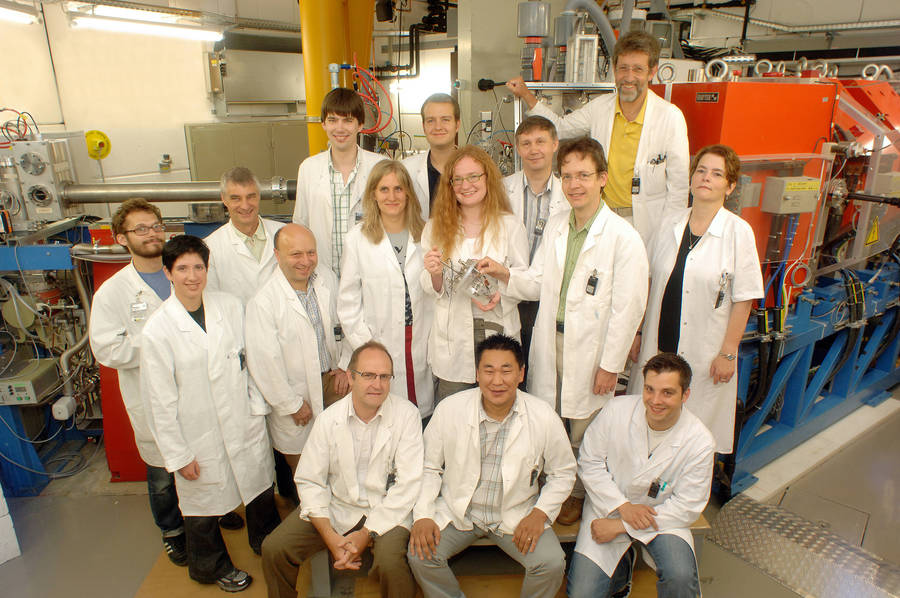
|
Download the picture: 300dpi72dpi |
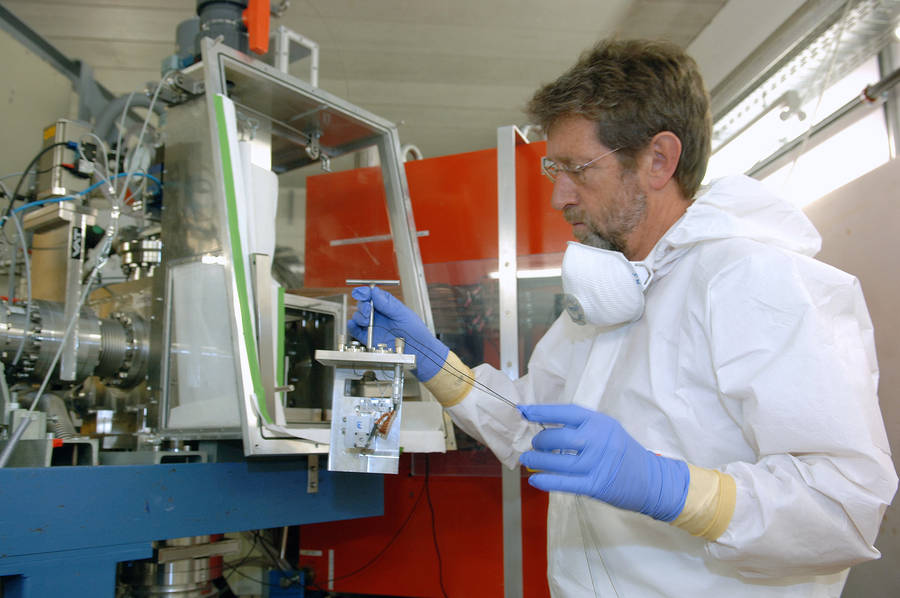 |
Download the picture: 300dpi72dpi |
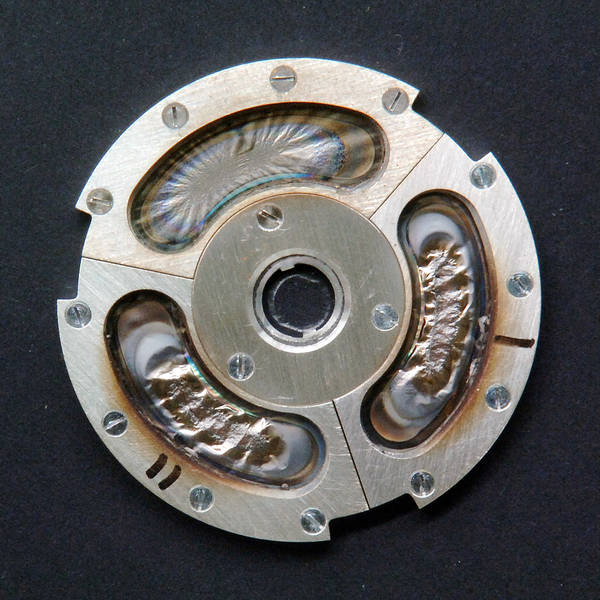 |
Download the picture: 300dpi72dpi |
Planckstr. 1 64291 Darmstadt Germany Public Relations Contact: Dr. Ingo Peter Fon: +49-6159-71-2598 Fax: +49-6159-71-2991 Email: presse@gsi.de |
|
Element 114 - Heaviest Element at GSI Observed at TASCA
An international collaboration of nuclear chemistry and physicists have succeeded in the first synthesis and detection at GSI of the superheavy element 114. The two observed isotopes with the masses 288 and 289 were produced in the bombardment of targets consisting of the very rare isotope plutonium-244 with calcium-48 ions from the UNILAC. The experiment was performed with the new, recently commissioned gas-filled separator TASCA (TransActinide Separator and Chemistry Apparatus) installed at X8. TASCA is currently the world-wide most efficient facility for nuclear fusion products from such reactions. The experiment was spearheaded by scientists from GSI, TU Munich, and Mainz University and carried out with participating scientists from Berkeley (USA), Jyväskylä (Finland), Liverpool (UK), Lund (Sweden), Oslo (Norway), and Kolkata (India). This first observation of element 114 at GSI confirmed with high statistical significance results previously obtained in the same nuclear reaction in Dubna (Russia). This successful experiment paves the way for many exciting follow-up studies of chemical and physical properties of superheavy elements.
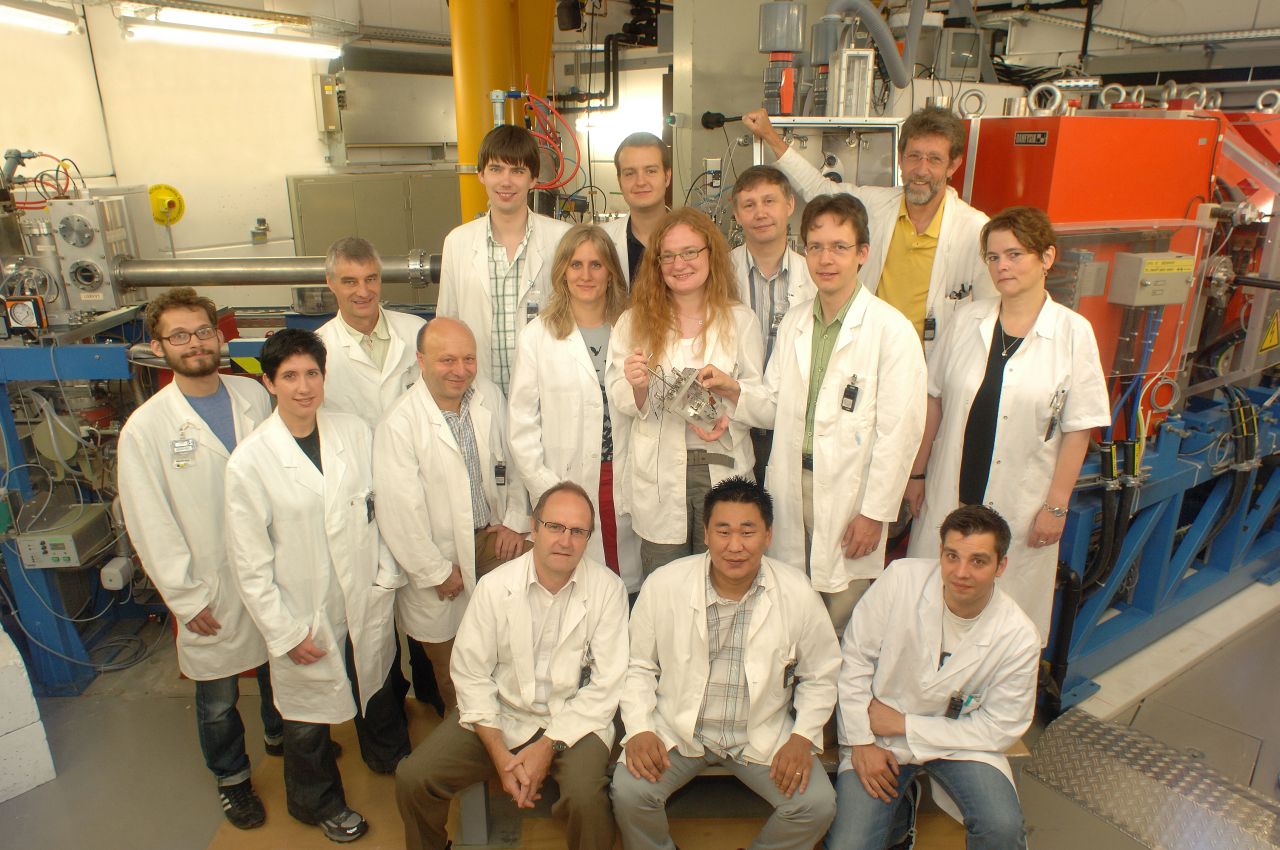
separator TASCA (UNILAC Cave X8)
after the most successful beam time was finished.
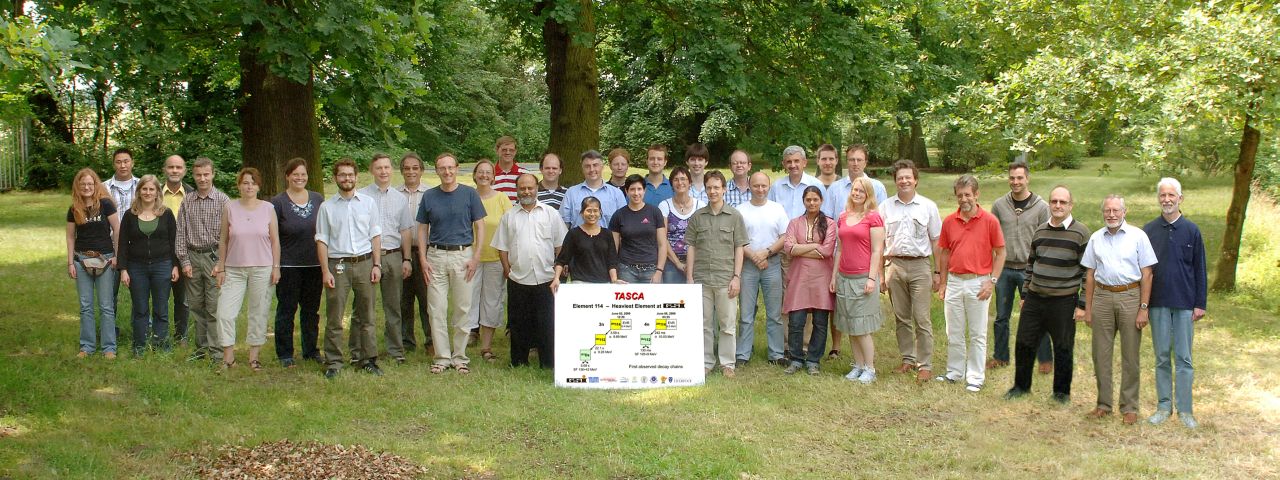
Photos: GSI Helmholtzzentrum für Schwerionenforschung, G. Otto

